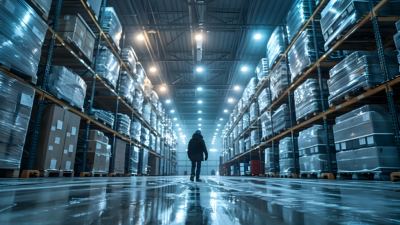The U.S. industrial sector shows no sign of slowing anytime soon. The records set in the previous quarter were blown out of the water at midyear as demand for industrial space remains at all-time highs. As more of the population receives COVID-19 vaccines and businesses and retail and entertainment establishments return to “normal,” this will continue to drive demand for the industrial sector.
Economic growth at midyear was also positive as unemployment continues to trend downward and consumer confidence expands further. The U.S. industrial sector has benefitted from these improvements as record-setting fundamentals were recorded at midyear. Overall net absorption totaled 230.9 million square feet year-to-date, with 119.3 million square feet of occupancy gains recorded in the second quarter alone. These record-setting totals are more than double the 109.3 million square feet recorded this time last year and higher than all of 2019, where 229.8 million square feet was recorded.
E-commerce growth continues to be a driving factor for industrial expansion and pent-up demand for the retail sector. In fact, retail sales are projected to grow between 10.5% and 13.5% at the end of 2021, according to the National Retail Federation. U.S. retail trade rose 0.6% from a month earlier in June 2021, following a revised 1.7% decline in May and easily beating market expectations of a 0.4% decline, as demand for goods remained strong. These retail figures should continue to encourage demand for warehouse distribution space.

Year-to-date new supply didn’t quite meet 2020 totals, falling 16% year-over-year, but deliveries are expected to pick up by year-end with a full pipeline. A total of 151.5 million square feet was built during the first six months of the year, and the market is poised to experience another record year in 2021. Almost 420 million square feet remain under development, almost 30% more than what was under construction at this time in 2020 and 14% higher than the previous quarter. The Dallas-Fort Worth industrial market continues to execute the most construction, as evidenced by the 13.6 million square feet delivered at midyear and the 35.1 million square feet under construction.

Thirty-one markets posted occupancy gains greater than 2 million square feet at midyear, including Dallas, Atlanta, Inland Empire, Chicago and Phoenix. On the other hand, just six industrial markets posted negative absorption – Milwaukee, Silicon Valley and Portland among them. The markets experiencing the most activity growth (absorption as a percent of inventory) include emerging markets such as Salt Lake City, Stockton, Las Vegas and Memphis. Demand for logistics and distribution space, primarily fueled by e-commerce occupiers, supports the strong growth seen in these cities.

Robust industrial fundamentals in the U.S. are expected for the foreseeable future. And, despite the rise in building materials costs, industrial construction will post record totals by year-end. E-commerce and overall retail growth will continue to fuel the need for industrial space; however, land availability remains an issue. The reduced land supply has created new interest in infill development opportunities, although rising costs for materials could limit development in those core markets. Despite these potential challenges, the industrial market is poised to experience another banner year.

 U.S. National Research
U.S. National Research
 Vytas Norusis
Vytas Norusis Craig Hurvitz
Craig Hurvitz
 Justin Smutko
Justin Smutko
 Aaron Jodka
Aaron Jodka